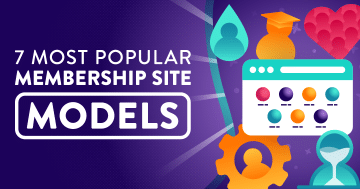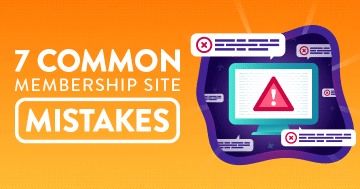Do you know what people in your audience actually want from your membership?
When planning your membership site, it's easy to fall into the trap of building something that we think would be good, rather than something that's based on research into what your audience really want (and need).
In doing so, you risk spending hours creating content and investing in features, only to be left scratching your head when people simply don't engage in the way you hope they will.
Whether it's your membership offering; your blog, podcast or video channel; or even just the updates you post on social media – discovering what people actually want and need is critical to connecting with your audience and driving them to action.
Here are just 4 ways to discover what your audience want:
Engage in Social Listening
Your audience does not begin and end with whoever is on your email list.
Potential members are out there discussing their problems, asking questions, sharing in frustrations and a lot more in a variety of locations across the web; including:
- Online communities and other membership sites
- Social media groups on Facebook, Google Plus and LinkedIn
- Blog comments sections
- On Twitter, connecting via hashtags and Twitter chats
- Q&A sites like Quora and Yahoo Answers
The simplest way to learn more about your audience is to find out where they are, and then spend time around them, listening and paying attention to what they're saying.
In doing so, you'll discover what questions are most commonly asked; what the major pains and problems they experience are; what knowledge and skill gaps exist; and what desires and goals your audience have.
This sort of information is invaluable for shaping your membership offering.
Conduct Surveys
Want to know what people want?
Cut to the chase and ask them!
Conducting surveys and questionnaires with your audience is the most direct way of getting feedback on specific questions that will help you to refine your membership, content strategy and a lot more.
This could be a multi-question, deep dive survey; or the simple posing of one single question to your email subscribers with an invitation for them to reply back to you directly.
While not the only approach; conducting your survey online will almost certainly give you the widest reach; and there are software and services available to make running your survey easy, such as:
- Survey Monkey
- TypeForm
- Google Forms
- WordPress form-builders such as Gravity Forms
Although a survey can give you access to a wealth of information; keep in mind that often what people say, what people do and what people say they do are usually all different things.
Behaviour and preference don't always line up; so compliment survey-based data gathering with the other techniques described in this article.
Observe Market Trends
It's important that you have your finger on the pulse of what's happening in your market.
Subscribe to RSS feeds and email updates from the most prominent blogs, podcasts and video channels related to your topic; particularly those your audience are also following.
Identify the influencers and connect with them on social media.
Pay attention to what they're talking about.
What questions are they being asked?
What are they excited about?
What frustrates them?
Popular influencers in a market help to amplify what's going on in their audience; so if the audience you're looking to serve with your membership is either the same as theirs, or if they overlap, then make sure you're watching closely.
Attending industry conferences can also be not only a great way of staying ahead of the curve; but also meeting influencers and your audience face to face; giving you the opportunity to really probe deeper into what makes them tick.
Crunch the Numbers
If you want to stand any chance at figuring out what's resonating with your audience, then at the very least you need to be collecting data on how they're using your website.
Google Analytics is certainly not the only website analytics service out there, but it's one of the most extensive and widely used (plus it's free!)
So if you don't have this – or an alternative – set up on your website then you're flying blind.
Analytics will give you data on which content is most read, most linked to, converts best and keeps people on your site for longer.
This can be revealing in terms of identifying the topics that your audience are most interested in and potentially want to hear more about.
It's not just your public content; however – you should have Analytics installed on your membership too in order to see which courses, tutorials or other membership content your members are consuming the most.
Outside of your website, the stats provided by social media platforms will show you which posts and shares have performed best. Email marketing services give reports on open and click-through rates. Podcast hosting services show you how many times your show is being downloaded.
Make sure you're not only collecting data, but taking time out regularly to analyse it in order to figure out which buttons are being pressed with your audience and what they want more of.






